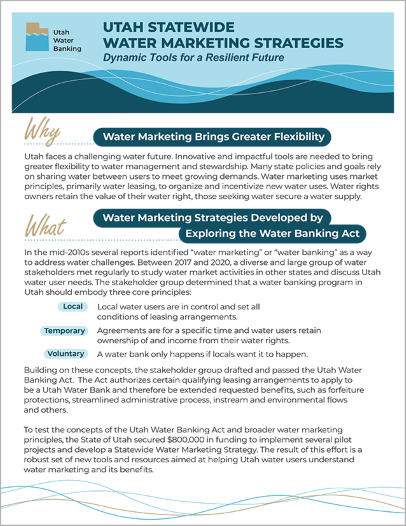Water Marketing Strategies & The Utah Water Banking Act
Water is critical to all aspects of life. Utah has a limited water supply that is asked to meet complex, competing and changing demands. To thrive, Utah needs flexible and practical means to orderly move and manage water. Intentionally developing policies for these means is effective because it creates certainty in the state’s use of water. Known means and policies allow the water user community to address new and novel issues as they arise.
Water marketing is one tool to address Utah’s most complex water challenges. Water marketing is the act of applying market principles like leasing, buying or selling to reallocate the use of water. Water markets are intended to address local water supply and demand conditions.
The state of Utah has developed interactive resources and practical tools to help water users explore and implement local water markets. To learn more about Utah’s Statewide Water Marketing Strategies and the Utah Water Banking Act, click the buttons below.
Not sure where to start? Begin with these overviews of water marketing efforts.
If you have questions or are interested in more information regarding water marketing and the Water Banking Act, please send an email to WaterMarketing@utah.gov.

